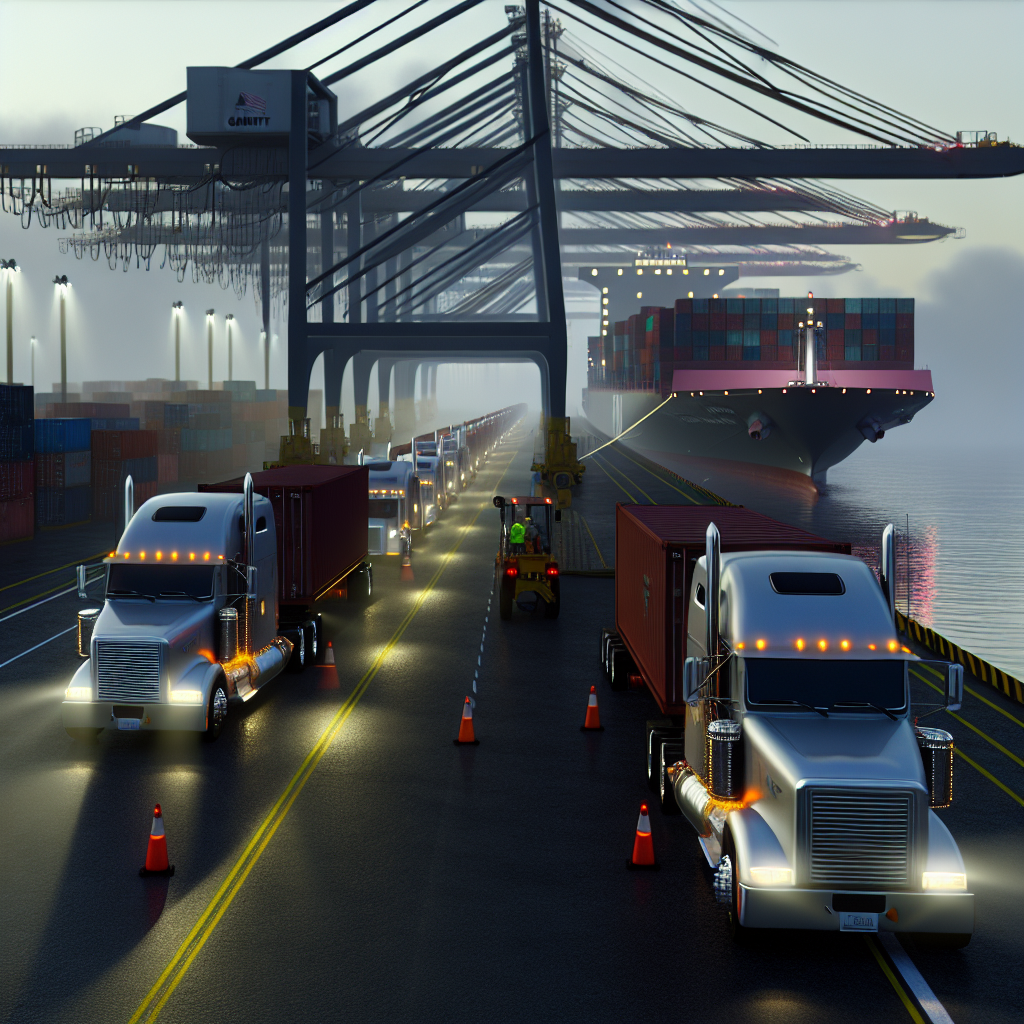Signals from Yemen’s Houthi movement that it is pausing attacks on merchant ships have injected a new, if fragile, optimism into global logistics. The group’s letter indicating a halt — one it says could be reversed if fighting in Gaza resumes — has been reported by multiple outlets and marks the first sustained break in hostilities since the Red Sea crisis upended ocean schedules in late 2023. Carriers and insurers aren’t declaring victory, but they are reassessing risk — and that matters for where, when and how freight lands on U.S. shores and moves by truck.
Two things can be true at once: the shooting appears to have stopped, and the danger isn’t gone. Analysts caution that liners will only restore Suez routings after a series of uneventful passages proves the pause is real. Until then, detours around Africa remain the default on many east–west services. In parallel, marine insurers say war‑risk pricing is unlikely to tumble immediately, keeping a financial brake on a rapid return through the choke point. Taken together, a “test and verify” posture is the base case for the weeks ahead.
For trucking, the near-term message is timing and geography. If and when more Asia–U.S. East/Gulf Coast services migrate back to Suez, import transit times improve and arrivals shift eastward. That would gradually rebalance drayage, chassis pools, and domestic linehaul away from some West Coast lanes that benefitted from Cape of Good Hope diversions. Expect any pivot to be phased, with trial sailings before full network rewrites — a sequence that tempers the risk of sudden whiplash at U.S. gateways.
Freight costs are already in flux. New general rate increases lifted several spot benchmarks last week, but market watchers note that a durable Suez reopening would ultimately add effective capacity back into global loops — a dynamic that typically caps ocean spot rates. Lower ocean costs don’t automatically translate into cheaper domestic trucking, but they can support steadier import flows that underpin local pickup, transload and regional truckload demand.
Insurers’ caution is a key variable for shippers planning 2025–26 contracts. Industry sources say underwriters want a string of safe transits before trimming risk surcharges, even as the pause reduces perceived threat. Elevated premiums keep some carriers on the fence, which in turn slows any rush back to Suez. That means truckers should plan for a period where both routings coexist — some services returning to the canal, others sticking with the Cape — with knock‑on effects for where containers need dray and how intermodal balances equipment.
Carrier behavior will matter as much as geopolitics. Hapag‑Lloyd’s results out today underscored just how volatile 2025 has been for liners, reinforcing the incentive to avoid fresh schedule chaos. Executives across the sector have repeatedly said safety — not speed — will govern any Red Sea return. A deliberate cadence lowers the odds of another rapid network flip that would ripple through U.S. port appointments, yard operations, and over‑the‑road capacity planning.
Fuel is the other lens for truckers. A shorter ocean leg reduces bunker burn, but retail diesel is driven more by refining and seasonal dynamics than by shipping lane choices. As of today, AAA pegs the U.S. diesel average at about $3.77 per gallon — up modestly week over week — suggesting no immediate price relief at the pump tied to Red Sea headlines. Any downstream impact from steadier global crude and distillate flows would take time to filter into rack and retail markets.
What to do now: importers and their motor‑carrier partners should scenario‑plan for gateway mix changes on the East and Gulf coasts; monitor insurer guidance and carrier advisories for phased Suez reinstatements; and avoid locking in rigid dwell and dray assumptions for December–January. If the stand‑down holds, the trucking opportunity is a more predictable ocean rhythm that feeds steadier yard turns, clearer appointment windows, and fewer last‑minute long‑haul expedites. If it doesn’t, the industry will be glad it kept contingency lanes warm.
Sources: FreightWaves, Financial Times, Associated Press, Al Jazeera, ICIS, AGBI, Reuters, Freightos, AAA
This article was prepared exclusively for TruckStopInsider.com. Republishing is permitted only with proper credit and a link back to the original source.




